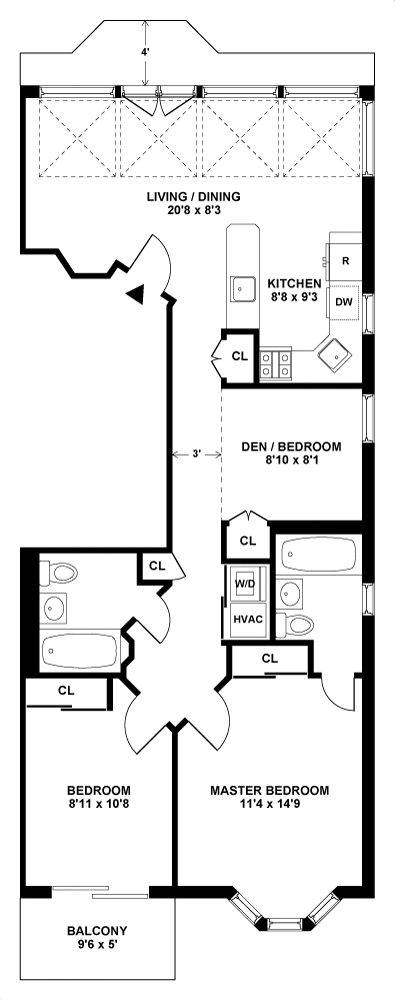Putting The Goats To Work.
This summer Prospect Park has a retro way to remove unwanted weeds: goats. Eight of them, from Rhinebeck.
The goats will graze on 1.5 acres in the northeast corner of park. They're fenced in on a hilly section of the Vale of Cashmere, next to the Donald and Barbara Zucker Natural Exploration Area, eating the invasive species that encroached after 50 trees were damaged by Sandy.
The goats, with their four stomachs each, will devour the poison ivy, English Ivy, and goutweed that have proliferated now that sunshine pierces the tree canopy. "The goats will eat anything and everything and that's the beauty of having them here," said Sue Donoghue, the president of the Prospect Park Alliance. "They'll actual help us with the removal of invasive species."
Eleanor Forster was on a morning stroll with her 3-year-old daughter and stumbled on the goats. "Having the animals here in a kind of natural environment without being in the zoo, it's lovely," she said.
But no petting these goats. In addition to the fact that they're behind an 8-foot-high fence, they're also covered in poison ivy (which doesn't affect them).
The goats have grazed around the region in other parks, including Fort Wadsworth on Staten Island and the Gateway National Recreation Area.
After the goats are gone, the park will plant native trees and shrubs in that area.
How Much Do You Need to Make to Live Comfortably in NYC?
Residents in this country's top 15 metro areas spend a large chunk of their income (unsurprisingly) on rent, and in New York City, a family would have to make over $158,000 a year to live comfortably in a two-bedroom apartment, a new study by SmartAsset, the financial data analysis service, has revealed.
The company based its study off of the U.S. Department of Housing and Urban Development (HUD)'s 30 percent threshold — where a household that spends more than 30 percent of its annual income on rent is considered cost-burdened.
By that logic, about 46 percent of renters across the country pay more than 30 percent of their income towards rent, according Harvard University's Joint Center for Housing Studies, leaving less money towards other household expenses and savings.
SmartAsset calculated its annual income threshold for each city based on a 28 percent rent-to-income ratio. By that measure, New York City ranks second (once again) to San Francisco in terms of the income required to comfortably rent a two-bedroom. In NYC, SmartAsset calculated the average cost of a two-bedroom apartment at $3,692 per month — that's actually a 0.1 percent drop from the previous year, though that's not really much of a consolation. On average, the cost of living in New York City is 70 percent higher than the rest of the country.
Think You Know What Your Home Is Worth?
450 West 17th Street, Unit 2306
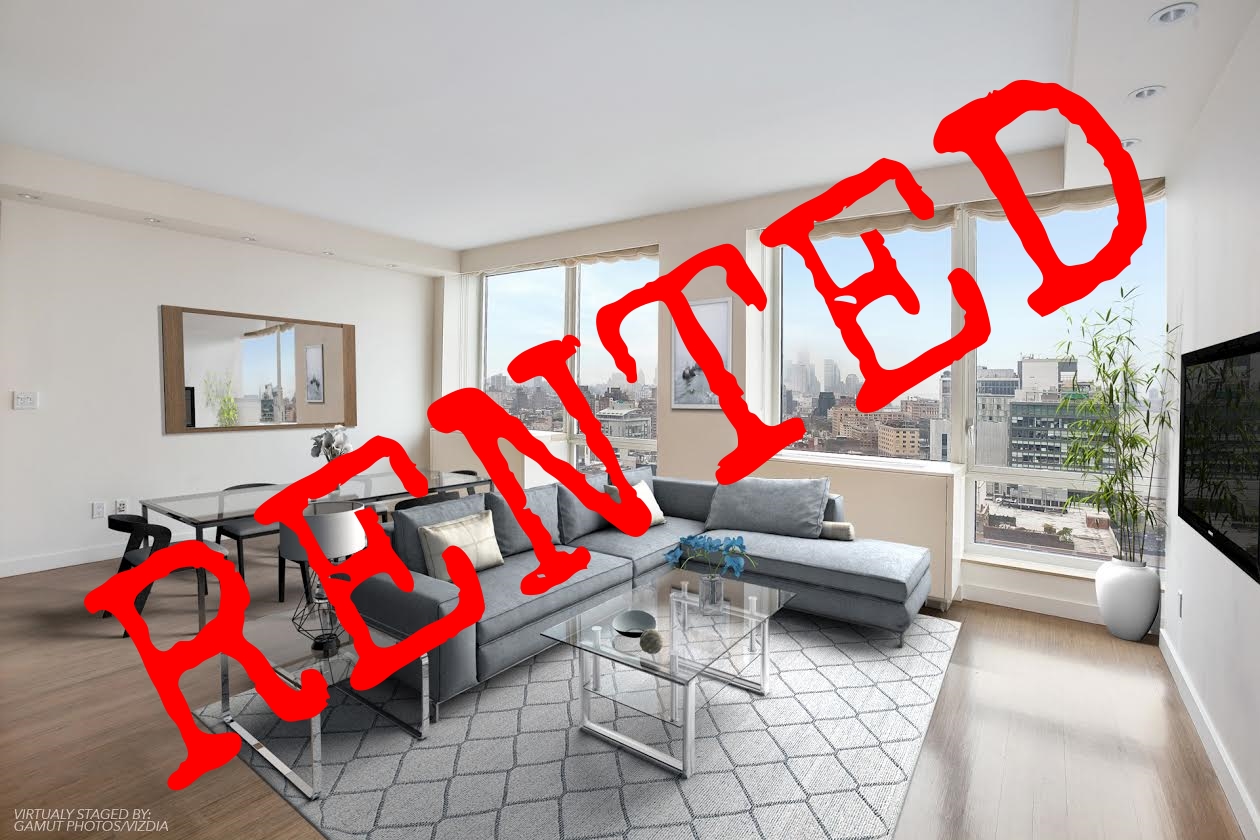





Available Immediately
The Caledonia • Condo in Chelsea, Manhattan, NY, 10011
450 West 17th Street, Unit 2306
2 BED
2 BATH
$9,900 / MONTH
Welcome home to this high floor, split two bedroom with stunning views of all of downtown Manhattan and the Hudson River! The spacious, open layout has plenty of living and dining space plus two large bedrooms all with oversized south facing windows flooding every room with amazing light. The open kitchen is equipped with top of the line appliances and finished with bamboo cabinetry making the design and functionality perfect for endless cooking and entertaining. The master suite includes a five-fixture bathroom along with a large walk-in closet while the second bathroom, in-unit washer dryer and ample storage by California Closets complete the space.
The Caledonia is one of West Chelsea’s premier full service buildings offering wonderful amenities include multiple indoor/outdoor entertaining spaces, direct access to Equinox Gym with preferred rates, storage and on-site parking.
Chinese Investment In US Real Estate Expected to Slide
With China’s domestic economy faltering, investment in U.S. and New York real estate is expected to slow over the next two years, according to a new report from the Asia Society.
The spigot won’t be shut off altogether: Some $58 billion is still expected to be deployed into commercial real estate in the U.S. between 2016 and 2020, according to the report’s authors. But they spoke of an 18- to 24-month “hiatus” that’s already underway as the Chinese government tries to right its economy.
The Chinese government has been taking longer to approve investments abroad in recent months, signaling an effort to staunch the flow of funds overseas, the authors wrote.
“We don’t see that as stopping investment abroad, and in fact, it hasn’t,” said Arthur Margon, a partner at Rosen Consulting Group, which was commissioned by the Asia Society to produce the report. “They’re trying to get righted while they defend their currency and fight inflation, so they’re changing the short-term strategy.”
Overall, Chinese investment in U.S. commercial real estate reached $8.5 billion in 2015, a record high and a 70 percent jump from 2010, according to the 111-page report, released on Monday. Compared to other countries, China ranked No. 3 among foreign investors in commercial real estate around the U.S. in 2015, behind Canada ($24.6 billion worth of investment) and Singapore ($14.6 billion).
Chinese firms set the table in New York, representing 56 percent of transaction volume between 2010 and 2015, including $9.56 billion in commercial real estate during the five-year period. High-profile plays include Anbang Insurance’s $1.95 billion acquisition of the Waldorf-Astoria Hotel, as well as Greenland’s 70 percent ownership stake in Pacific Park in Brooklyn.
“New York has been a major focus and it’s the largest recipient of Chinese investment in commercial real estate,” said Margon, citing the stability of real estate here. “They’ve been very active in just amassing properties across the spectrum.”
Prominent New York real estate players have been divided on the fate of Chinese investment in recent months. Earlier this year, Related Companies CEO Jeff Blau said developers “should be looking for other sources of capital over the next few years.”
Last week, panelists at The Real Deal’s New York Real Estate Showcase and Forum said they believe Chinese buyers are more eager than ever to park their money in a safe haven. “You may see a different economy in China, but the Chinese are still buying here,” said Elizabeth Ann Stribling-Kivlan, president of residential brokerage Stribling & Associates.
On the residential side, Chinese buyers outpaced investors from all other countries, purchasing $28.6 billion worth of property in 2015 and besting Canada’s $11.2 billion and India’s $7.9 billion.
Despite the buzz surrounding Chinese buyers of New York City condos, the vast majority of residential investors have scooped up property in California, which accounts for one-third of such investment in the U.S., compared to New York’s 7 percent. Deep-pocketed investors still flock to New York, where they can buy and sell condos with relative ease, Margon said.
Other findings by the Asia Society include:
- $93 billion in residential investment between 2010 and 2015;
- $17.1 billion in commercial real estate investment between 2010 and 2015;
- $9.5 billion investment via the EB-5 visa program;
- a $207.9 billion position in U.S. government-backed mortgage bonds; and
- $8 billion in loans made by Chinese banks for commercial real estate projects in the U.S.
Correction: The subhead misstated the total investment in U.S. real estate; it’s believed to be $110 billion, not $100 million as initially reported.
“We’re Going to See Some Real Distress”: Witkoff
Steve Witkoff isn’t known for pulling punches. And he wasn’t about to start today.
“I believe that we’re going to see some real distress,” the developer said Tuesday, sounding alarm bells over the state of New York’s new development market.
Speaking about the new development market at Weiser Mazars’ Commercial Real Estate Summit, Witkoff said “Miami is a brewing storm and it’s going to get even worse out there (…) and I think in part we’re going to see it in New York.” His firm, he claimed, tracks at least 15 new projects in New York that sell just one percent of their units per month.
“That’s a 100-month sellout. Unless you’re MaryAnne Gilmartin or Larry Silverstein you can’t withstand a 100-month sellout.”
Gilmartin, the CEO of Forest City Ratner, and Marty Burger, CEO of Silverstein Properties, happened to share the stage with Witkoff for the panel, which also included Howard Hughes Corp. CEO David Weinreb, Ackman Ziff’s president Simon Ziff, and Cole Schotz attorney Leo Leyva.
Two years ago, such a panel would have been an occasion to gush about never-ending demand from foreign investors. But Tuesday’s talk was more somber, focusing on the numerous challenges facing a swooning market. Top of the list:tighter financing.
“A lot of investors hit the pause button,” said Ziff, whose firm specializes in capital markets brokerage. He said demand from investors has cooled across the capital stack, be it senior debt, mezzanine financing or equity.
“It’s just taking a lot more conversations to get a lot fewer people to the table,” he said.
Weinreb stressed the importance of building up cash reserves as financing grows tighter, while Leyva observed that developers are forced to spend more on loans. “Strong sponsors trying to go to the banks are not getting financing,” Leyva said. “You’d be surprised as to the names of some of the sponsors or developers that are using non-traditional financing. This year we’ve seen a huge surge in bridge lending.” Howard Hughes Corp., he revealed, plans to finance its South Street Seaport commercial development through its own balance sheet.
Panelists also complained about rising construction costs and delays, caused by booming demand for a limited number of contractors. Over the past three years, “I would bet you that you can’t name me one single project that was on time and on budget” Witkoff said. “That’s how stretched ;subcontractors] are, that’s how bad schedules are.”
“The risk-reward equation has changed dramatically for sensible people,” he added, arguing that rising construction costs and increasing delays discourage developers from building.
Burger agreed. “We’re always trying to get the A team from our contractor, but the A teams today are stretched across seven or eight projects when they should only be working on three or four,” he said. “The architects, consultants and engineers are all stretched. It’s really hard to get quality work out of anyone because they’re taking on too much work.”
Gilmartin bemoaned a lack of government support for new development in New York, pointing to the expiration of 421a and uncertainty over the future of the EB-5 visa program, both programs Forest City has made repeated use of.
“The debacle over 421a will have far reaching implications for ground-up residential construction,” she said.
These 9 Penthouses That Just Won't Sell
New Sales Listing - 201 East 21st Street, Unit 6B


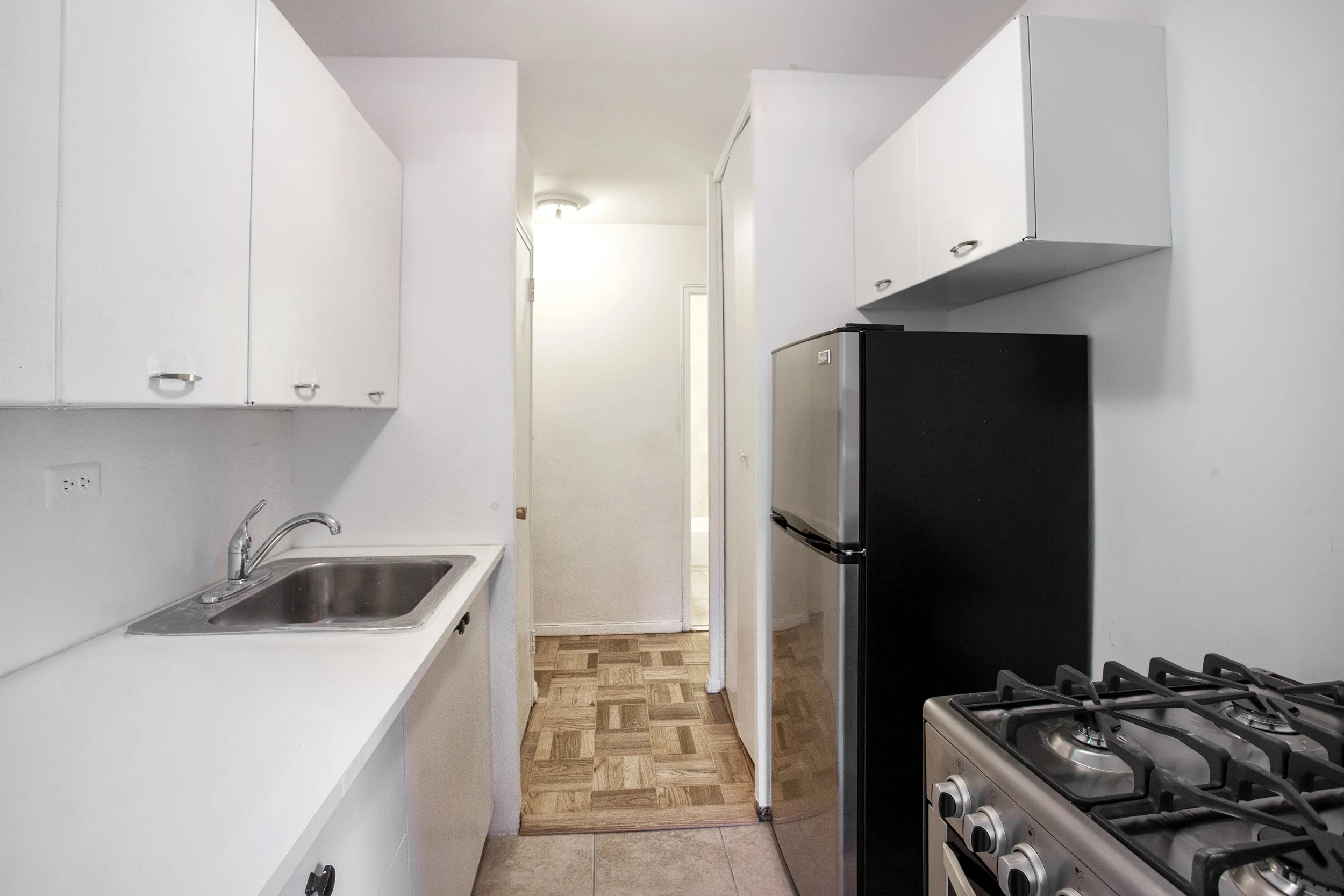




Gramercy, Manhattan, NY, 10010
201 East 21st Street, Unit 6B
1 BED
1 BATH
$925,000
Welcome home to this spacious Junior 4 apartment offering a great layout, ample storage space and thoughtful updates, all located in one of Gramercy’s most sought-after buildings!
This converted two-bedroom, one-bathroom apartment features large west and south facing windows in nearly every room. You'll find abundant storage space throughout the apartment with five large closets, oversized rooms paved with newly refinished parquet floors and a flexible floorplan ready to meet your needs. The gracious foyer flows into the oversized living room to provide an immense space ready to accommodate living and dining spaces. The converted second bedroom is suitable for use as a home office, nursery or can be converted back to a dining area. The large 11-foot by 17-foot master bedroom provides plenty of room for a king bed and additional furniture. The bathroom was just gut renovated with all new fixtures while new stainless steel appliances line the kitchen giving it a fresh update.
The Quaker Ridge is known for its stellar financials and low maintenance, not to mentions its prime location just steps from Gramercy Park. The co-op includes a full-time doorman, live-in superintendent, new laundry facilities, bike storage and a residents-only parking garage with direct access to the building. The building allows co-purchasing and pets, but does not permit guarantors or pied-à-terres.
New Sales Listing - 734 East 5th Street, Unit 4L
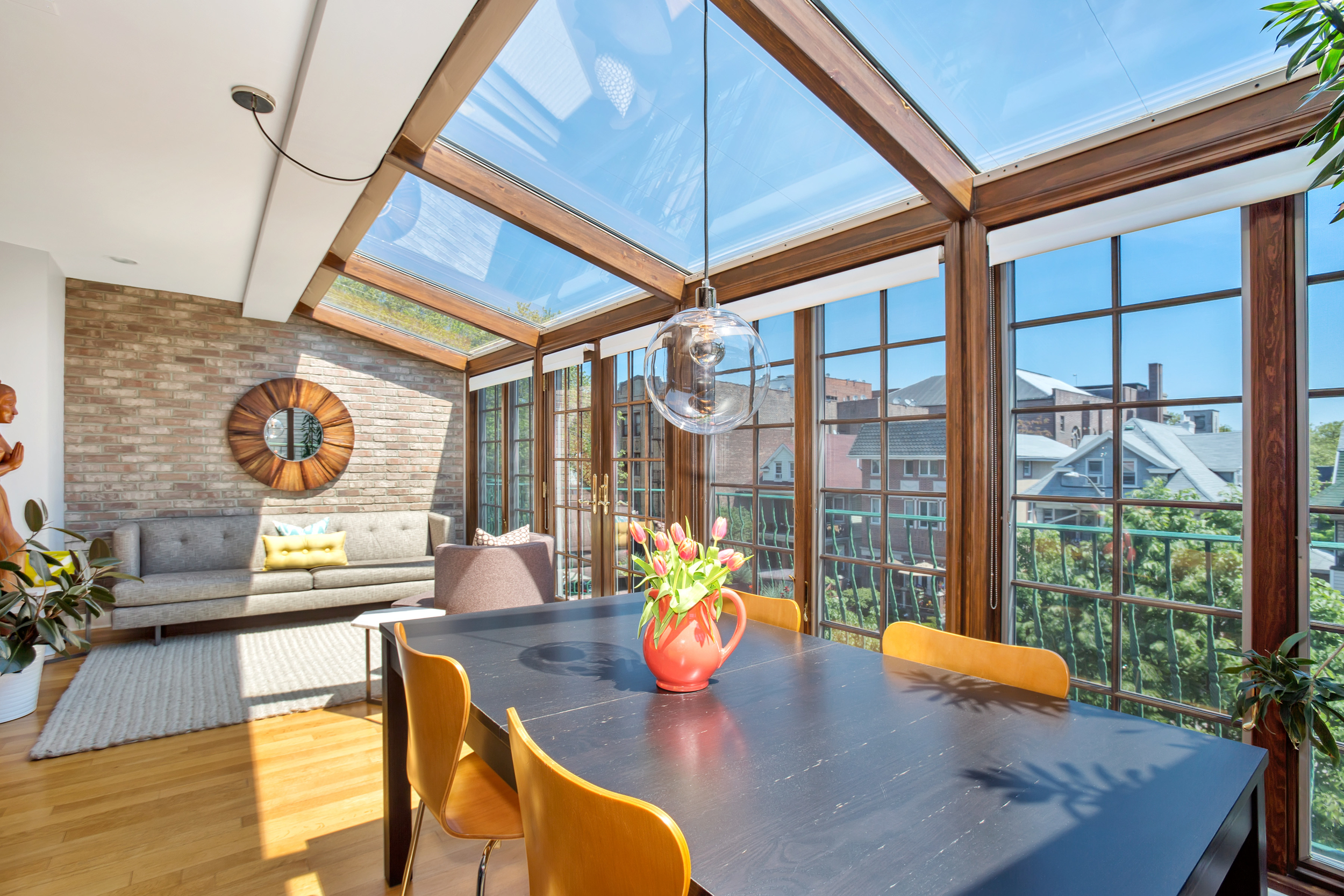






Kensington, Brooklyn, NY, 11218
734 East 5th Street, Unit 4L
Rarely available 2 BD 2 BA convertible 3 CONDO!! Apt features 2 Private Balconies and large private storage room. Spacious top floor apartment easily convertible to a 3 bed with deeded roof rights. Over-sized windows are flooded with sunlight and come with Levelor skylight blinds. East facing balcony floods apartment with morning sun and west facing balcony off the 2nd bedroom in the back is perfect for afternoon light. Also enjoy beautiful bay windows in master bedroom. The open living and dining area is perfect for lounging or entertaining. Hard-wood flooring through-out every room. Open kitchen is custom made with walnut stained cabinets, white marble counter tops, stainless steel appliances, gas stove, Sub-Zero refrigerator and double sinks. Bathrooms features deep soaking tubs and Toto toilets. Master bath equipped with jetted tub. Also includes Bosch Stackable Washer/Dryer, Central air and video intercom security. Additionally apartment is network ready and building is wheelchair accessible with indoor/outdoor elevators. With super LOW taxes and Common Charges, this apartment is a STEAL. Tax abatement until 2026. F train close by at Ditmas Ave. Plenty of shops at 18th Ave to choose from or take a short walk to trendy Cortelyou Road. Sorry, No Pets Allowed.
The Real Estate Chiefs Who Get Paid The Most
CEO pay may be increasingly coming under the microscope these days, but real estate’s top NYC executives are still raking it in.
Although public companies are changing their compensation models to ensure that CEOs don’t get monster pay packages while their companies’ finances falter, so far pay reductions have remained largely at bay.
This month The Real Deal combed through disclosures filed with the U.S. Securities and Exchange Commission to find out just how much some of the industry’s top-paid chiefs are bringing home. The numbers are staggering. The Blackstone Group’s CEO took home nearly $800 million — though that’s with his corporate dividends tallied in. Meanwhile, Elliman’s chairman, Howard Lorber, and General Growth Properties’ CEO, Sandeep Mathrani, racked up $42.5 million and $39.2 million, respectively.
Still, new public disclosures that take effect in 2017 could curb those amounts going forward.
The SEC regulations will require public companies to publish ratios comparing their CEO’s pay with the median pay for their workers.
And if that weren’t enough to rein in compensation, political pressure is also mounting.
Democratic presidential candidate Bernie Sanders has made the issue a central one on the campaign stump. “The average chief executive in America now makes nearly 300 times more than the average worker — and the gap between the people at the top and working families is growing wider and wider,” he said recently.
There’s also sluggishness in the REIT sector that’s prompting public real estate firms to at least think twice before dishing out giant salaries with no strings attached.
Together these three realities have prompted many public real estate companies to retool their compensation models to ensure that their CEOs are rewarded only when their companies do well. More specifically, companies are upping the percentage of executive compensation that’s considered “at risk,” meaning that it’s awarded only if executives deliver on performance goals.
“A number of companies have transitioned from old structures to more measurable ones that pay out based on coherent, multi-faceted results,” said Alexander Goldfarb, a REIT analyst at investment bank Sandler O’Neill + Partners. “They’re putting in performance metrics and measurable goals.”
It’s a fine line to walk since companies need to keep compensation and incentive packages lucrative in order to recruit and retain talent.
Still experts and analysts say real estate CEOs can’t be lining their pockets with millions of dollars a year while their investors absorb losses.
Of course, private firms like Related Companies and Extell Development are not subject to the same levels of scrutiny since they’re privately held and do not have the same obligation to investors.
Read on for a closer look at what some of the top-paid industry bigwigs are making — and how their pay formulas are changing.
Stephen Schwarzman:
$799.2 million (including dividends)
Blackstone Group
Turbulence in both the financial and real estate markets didn’t put a dent in Stephen Schwarzman’s 2015 bottom line — or in his private equity fund’s performance.
The co-founder and CEO of private equity and real estate giant Blackstone racked up nearly $800 million in compensation and dividends derived from his ownership stake in the company.
Schwarzman’s base salary — which has been just $350,000 since the firm went public in 2007 — is just a starting point for what he earns in a given year.
The mogul also took home $88.3 million in firm profits through carried interest payouts, a whopping $644.8 million in dividends, and other various extras. That added up to $799.2 million in total compensation, up from $689.3 million the previous year, regulatory filings show.
However, a huge chunk of that pay comes from the skin Schwarzman has in the game: He owns about 20 percent of the company.
While Schwarzman is one of the largest shareholders in the company, all named Blackstone executives officers are required to personally invest alongside the funds the company manages. “We believe this strengthens the alignment of interests between our executive officers and the investors in those investment funds,” the company recently said in an SEC filing.
The company did not disclose a salary for its real estate chief Jon Gray, but he is no doubt doing just fine on the compensation front. His division has been firing on all cylinders. Late last year Blackstone acquired the massive Lower East Side apartment complex Stuy-Town for $5.3 billion alongside Ivanhoe Cambridge, a move that helped boost its real estate assets under management to over $100 billion.
Schwarzman, meanwhile, has enjoyed the benefits of his massive payouts for years. For his 60th birthday in 2007, he took over the Park Avenue Armory and had Patti LaBelle sing him “Happy Birthday.” Rod Stewart, Donald Trump and Barbara Walters were also there. He’s also donated huge sums to the likes of the New York Public Library ($100 million in 2008) and his alma mater Yale University ($150 million in 2015).
Howard Lorber:
$42.5 million
Vector Group
Douglas Elliman chairman Howard Lorbersaw his total compensation jump 40 percent last year from 2015 as revenue from his real estate operations soared.
His total package came to a whopping $42.5 million.
That broke down into a base salary of $3.1 million, stock awards totaling upwards of $30 million and various other non-equity awards and options.
The figures were outlined in a March 25 proxy statement filed with the SEC by Elliman’s parent company, Vector Group Ltd., where Lorber is president and CEO.
Lorber’s contract with Vector, which was renewed last November, states that the board can periodically increase his salary — but can’t lower it. Lorber is also eligible for a bonus of 100 percent of his base salary. Even if he’s fired, Lorber would continue to receive his $3.1 million base salary for 36 months plus the average amount of his last three bonuses during those three years. In addition, all his outstanding equity awards could be vested, according to the SEC filing.
Lorber declined to comment on his compensation, but insiders told TRD that the $42 million is artificially inflated by the CEO’s stock awards, which were given this year but vest gradually over the next decade. In other words, those funds are promised but have not yet been delivered in full.
Lorber is also entitled to various benefits, including a full-time company car and driver, a $7,500-a-month allowance for hotel stays, two club memberships as well as use of the corporate aircraft.
Meanwhile, Lorber also sits on the board of the hot dog giant Nathan’s Famous, which paid him $616,000 last year for serving as the chair of its board.
Lorber, it seems, does not need to be too concerned about a performance-based pay reduction — at least for now. The real estate part of his empire has been doing well: Elliman reported revenues of $637 million in 2015, a 17 percent increase year over year.
And Lorber has clearly been in a celebratory mood. He recently shelled out $15 million for a pad at 432 Park Avenue.
Sandeep Mathrani:
$39.2 million
General Growth Properties
General Growth Properties’ CEO Sandeep Mathrani has come a long way since emigrating from India 37 years ago by himself at age 16.
The executive famously got his first taste of the real estate business after selling his Nissan Sentra to raise funds to buy an apartment.
That’s a far cry from where he ended 2015. The CEO wrapped up the year with the promise of full pockets, thanks to his $39.2 million compensation package.
That hefty payout from the mega-mall operator included two massive stock awards — one for $25 million and the other for $10 million after Mathrani inked a new contract last year, according to SEC filings. However, most of that cash won’t vest until 2020, meaning that he won’t see all of it unless he stays at the firm and hits his performance targets for the next four years.
Mathrani’s actual base salary was $1.2 million. He also took home an additional $3 million bonus in addition to his stock awards.
But his compensation was contingent on his hitting several performance targets in 2015.
The firm — which bought the Crown Building in Midtown for $1.75 billion in partnership with Jeff Sutton in December 2014 — wanted him to increase mall occupancy nationwide, locking in new leases at rates 10 percent higher than exiting ones, and add to the firm’s new development pipeline.
Mathrani is the only executive officer at GGP who is not an “at-will” employee, meaning he’s guaranteed a so-called golden parachute or payout if he’s fired without reasonable cause.
Mathrani had jumped to GGP from Vornado in 2010 to help restructure the firm as it emerged from a high-profile bankruptcy. Last year, the firm sold the fourth through 24th floors of the Crown Building to Michael Shvo and Russian developer Vladislav Doronin for about $500 million.
David Neithercut:
$12.7 million
Equity Residential
Sam Zell may be the face of Equity Residential, but he doesn’t bring home as much as his top underling.
The REIT’s CEO, David Neithercut, took home $12.7 million last year — $11.8 million of which is tied to his performance over the next three years at the company, according to SEC filings. Yes, Neithercut, who was named CEO in 2005, gets the vast majority of that cash only if he meets certain targets.
Still, his pay is close to four times the $3.3 million pocketed by Zell, chairman of the company’s board, in 2015.
Last year was a strong one for Equity Residential. It ended the year with annual revenue growth of 5.1 percent, filings show. That bottom-line figure was boosted by the sale of 72 properties nationwide consisting of 23,262 apartment units to Starwood Capital Group for $5.37 billion. The deal, which took place last October, generated an 11 percent return.
But had that deal flopped, executive salaries could have taken a hit.
“The compensation committee believes that as the responsibilities of our executives increase, the proportion of their total compensation that is ‘at risk’ and dependent on the company’s performance should also increase,” the company said in filings.
Meanwhile, Zell is the only member of the board whose travel expenses are not covered by the company. His retirement benefit comprises a minimum $500,000 annual payment for a 10-year period — unless he’s fired for a reasonable cause.
Read More.....
Tour Demi Moore’s $75M penthouse in the San Remo
When Demi Moore listed her penthouse apartment atop the San Remo, it made quite the splash. Not only is it the former home of two movie stars (Moore lived there with her ex, Bruce Willis), but it has a shocking price tag of $75 million.
One year later, LLNYC took a tour of the grand listing, and while we can’t say definitively whether it’s worth the price, it’s certainly worth a look inside.
The Hoffman Team Has Gone Social!
Average Condo Sale in Manhattan Reaches $2.9M, Setting New Record
For the second quarter in a row, average condo sales prices in Manhattan are breaking records. The first three months of 2016 saw $4.59 billion in aggregate sales, breaking the previous record of $4.57 billion that was set last quarter, according to data from CityRealty. The average sales price topped out at $2.9 million, also significantly higher than last quarter’s $2.5 million. These figures aren’t surprising considering 24 percent of all condo sales during the beginning of this year were at or above $10 million, with new luxury developments like 432 Park Avenue, The Greenwich Lane, and 150 Charles Street accounting for the uptick.
Ian Schrager Carves Up $80M Penthouse at 160 Leroy Into Two Units
Call it the (overpriced) penthouse effect.
After shooting for the stars with an $80 million penthouse at 160 Leroy Street, Ian Schrager is the latest developer to fall back to Earth with two smaller and less expensive units.
The Studio 54 co-founder – apparently taking a page from projects like 432 Park Avenue and 10 Sullivan Street – has divided what would have been a 12,200-square-foot spread at his curvy ultra-luxe West Village condominium into two units measuring approximately 7,700 square feet and 4,800 square feet, according to filings with the New York State Attorney General. The smaller apartments have price tags to match: $48.5 million and $29.5 million, respectively.
“We thought it would be better for the marketplace; it’s what people were asking for,” said Howard Lorber, president and CEO of Vector Group Ltd., whose New Valley subsidiary is an investor in the project along with the Witkoff Group and Ares Real Estate.
“Buyers said, ‘We love the top floor, but we don’t want to spend $80 million,’” said Lorber, who is also chairman of Douglas Elliman, which is handling sales at 160 Leroy. “So we figured we’d give them what they want.”
The $80 million penthouse at the Herzog & de Meuron-designed project isn’t the only unit the developers retooled.
They’ve also altered the building’s unit mix to include 56 apartments instead of 48, according to an amendment filed with the AG in February and obtained by The Real Deal. In doing so, the developers carved out several smaller units, replacing larger (and pricier) ones.
Five planned penthouses – the smallest of which measured 6,100 square feet and was asking $24.5 million — have been replaced by eight smaller apartments, the amended plans show. The smallest of the eight pads measures 3,562 square feet and is listed for $13.75 million, according to AG filings.
Lorber said the developers’ decision was in response to buyer demand for slightly smaller condos, which are selling at a brisk pace. “The market is strong,” he said. “The main reason was to create some [more units like] a line that had sold out.”
In an interview with Bloomberg last month, the hotelier and developer said he was “mindful but not worried” about the luxury condo slowdown.
“If you have a really great product, it sells irrespective of the time on the market,” Schrager said. “Apple comes out with a product — it sells. People don’t even know they need a new iPhone or iPad. It still sells because it’s so well-executed and that’s what we’re trying to accomplish.”
Schrager obtained a $265 million construction loan for the project in February and said in mid-April that the building was more than 60 percent sold. Schrager himself is a buyer there, having scooped up a 12th-floor apartment for about $15 million earlier this year.
The developers of 160 Leroy are not alone in carving out multiple units from large apartments amidst a waning luxury market.
Last year, CIM Group and Macklowe Properties divided the full-floor units on five floors at 432 Park. And in February, Madison Equities and Property Markets Group’s chopped the $45 million triplex penthouse at 10 Sullivan Street into two units asking $11 million and $29.5 million.
A TRD analysis of StreetEasy data in April found that 35 percent of penthouses on the market have seen price chops
New Sales Listing - 125 Ashland Place, Unit 9C
One-Bedroom


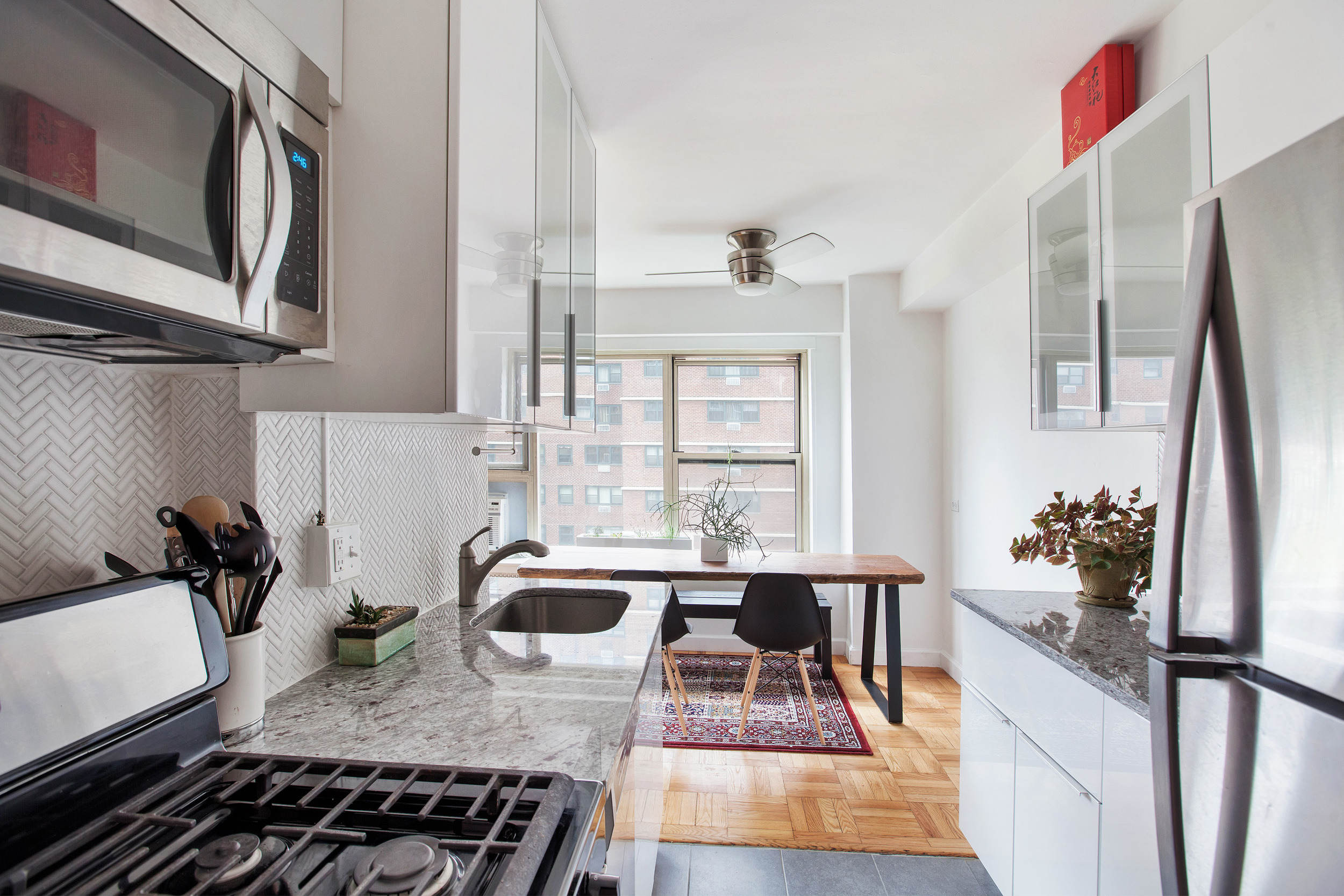
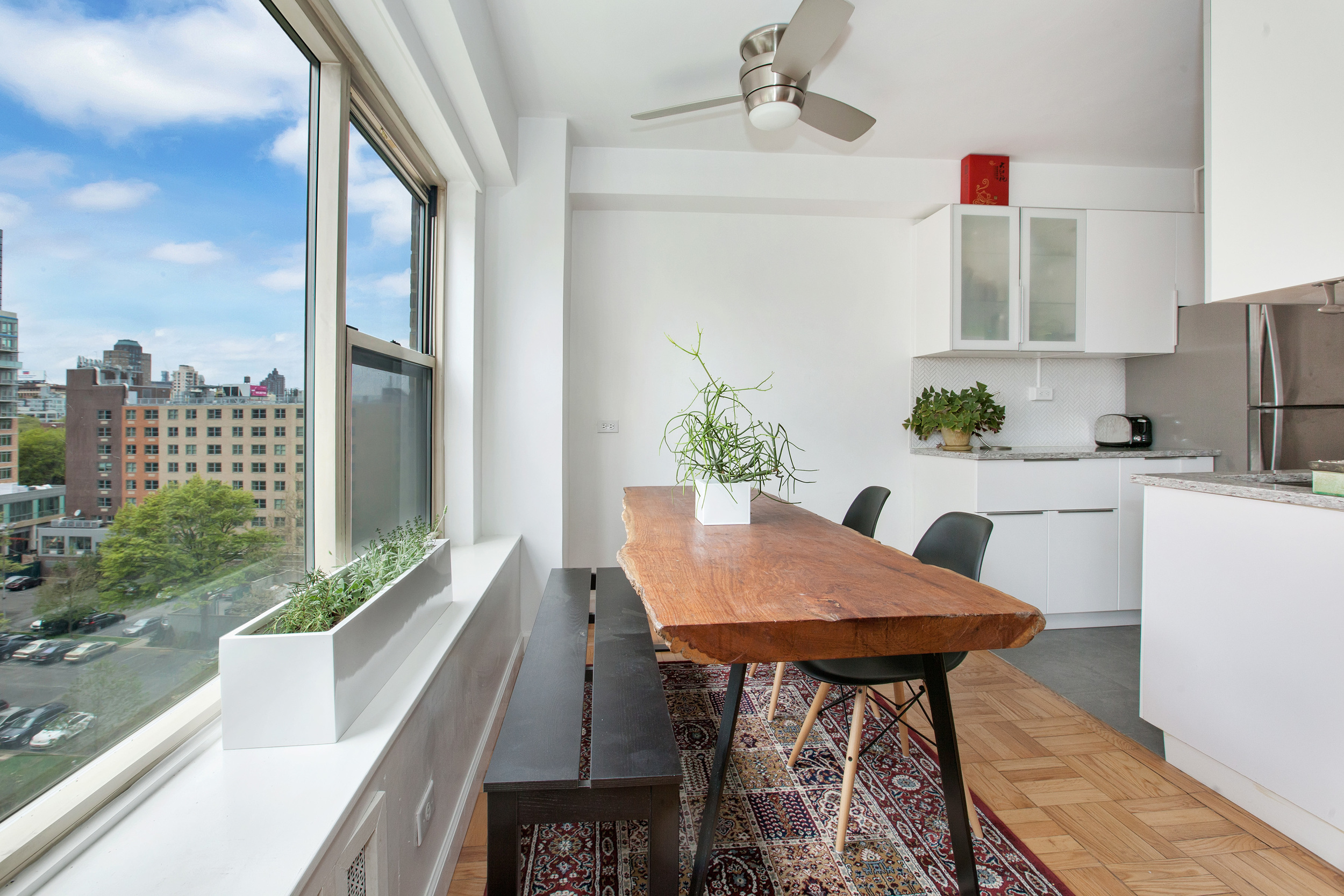
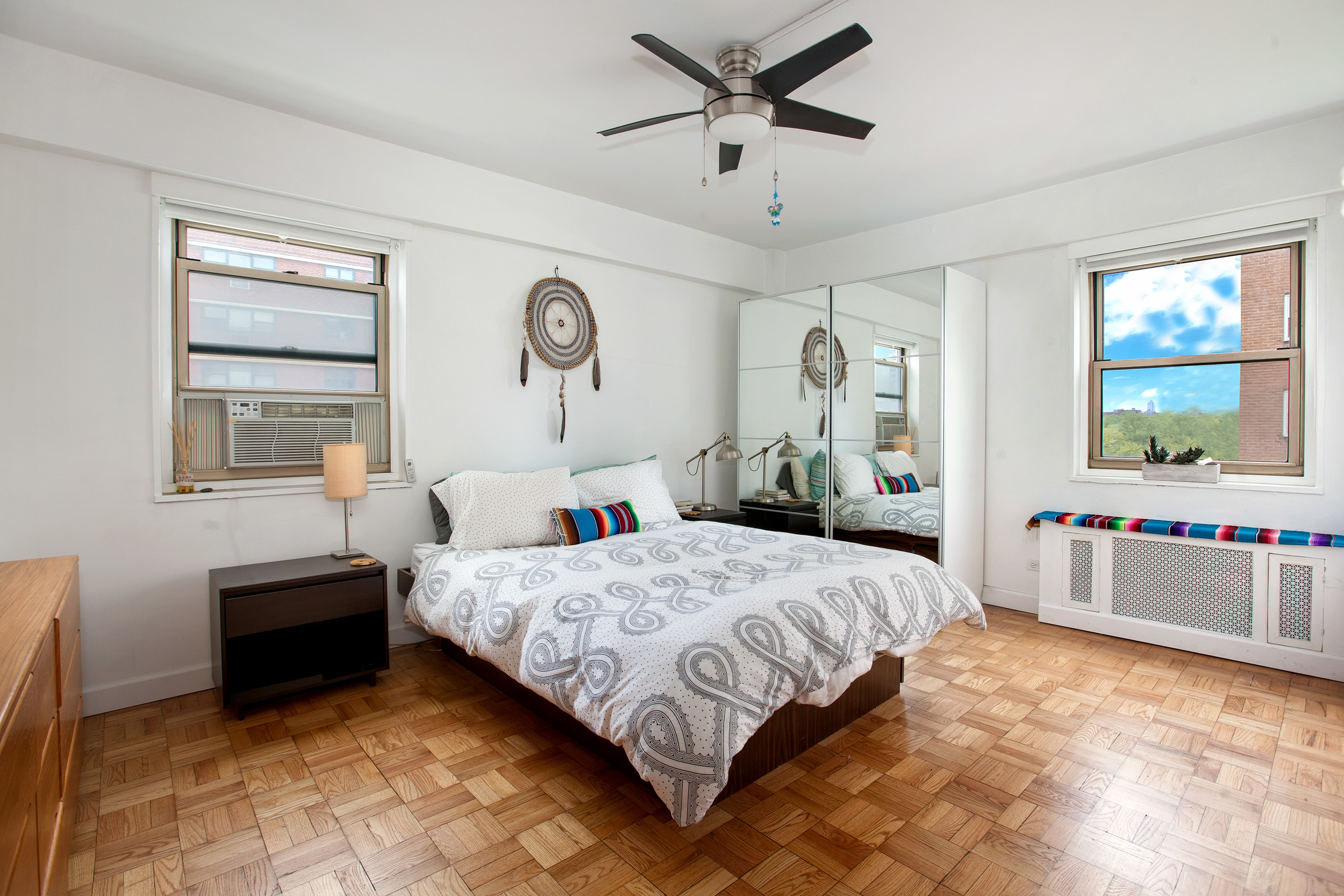


One-Bathroom
$485,000
Spacious newly renovated one-bedroom corner unit has a wall of oversized-windows and dining alcove. The living and dinging room are sun-filled all day long with an excellent open view. Newly renovated this unit, is in excellent, move-in condition. The custom galley kitchen features beautiful granite counters and custom backsplash, with modern glass cabinetry and stainless steal appliances. This kitchen is both beautiful and highly functional. The brand new bathroom has subway tiles as well as a glass enclosed shower. The oversized corner bedroom can easily fit a king sized bed, both the bedroom and throughout the apartment there is an abundance of closet and storage space with two huge walk-in closets. Maintenance includes all utilities (heat, hot water, electric and gas)!
Kingsview Homes is a peaceful gated community with parking, 24-hour private security service, central laundry room per building, storage, playground and beautiful, serene landscaped gardens.Conveniently located, this complex is just steps to exciting amenities and attractions this area has to offer such as: Ft. Greene park, BAM, Barclays Center, Atlantic mall, international cuisine and shopping. Public transportation is just a stone-throw away with trains 2,3,4,5,A,C,D,E,J,M,Q,B,R,N. THIS COOP HAS A NO PET POLICY.
Record-Breaking Subway Ridership Numbers May Pose Safety Concerns
The recent increase in subway ridership has raised several challenging questions for both commuters and the Metropolitan Transportation Authority (MTA) alike, and the New York Times has now taken a closer look at some of these issues in a new report about the congestion.
With close to 1.8 billion rides per year, subway ridership is now the highest its been since 1948. The last time the subway system was confronted by such a glut of passengers was during the Great Depression and subsequently during World War II.
Six million people ride the subway everyday compared to about four million back in the 1990s, and this has of course led to several safety concerns. For one, the NYPD is concerned that overcrowding on subway platforms may lead to people falling on to the tracks. There are also concerns that overcrowding on trains leads to more assaults —an issue that is likely to snowball during the summer as the temperatures on platforms become increasingly unbearable.
Overcrowding has also led to more delays — in fact they've quadrupled since 2012 due to the increasing ridership.
The MTA is trying some quick fixes — some platforms like the one serving the L train at 14th Street-Union Square and at 86th Street on the 4,5,6 trains now have platform controllers to manage crowds better.
The agency is also exploring some new options like open gangway subway cars, but that hasn't gone down too well with New Yorkers.
All that aside, the subway infrastructure is still severely lacking. Installing a modern signal system to allow for more trains is quite some time away, according to the Times.
The opening of the Second Avenue Subway this year might finally ease up the commute on the Upper East Side, and an approval of over $14 billion in funds for the subway might also address some other key infrastructural concerns, but all of that remains to be seen.
London is another city with overcrowding issues. The subway stations there simply close when the crowds become unmanageable, and only let people in once traffic has eased up. A representative for the MTA told the Times that such a measure was not under consideration for NYC.
New Sales Listing - 100 Jay Street, Unit 4J
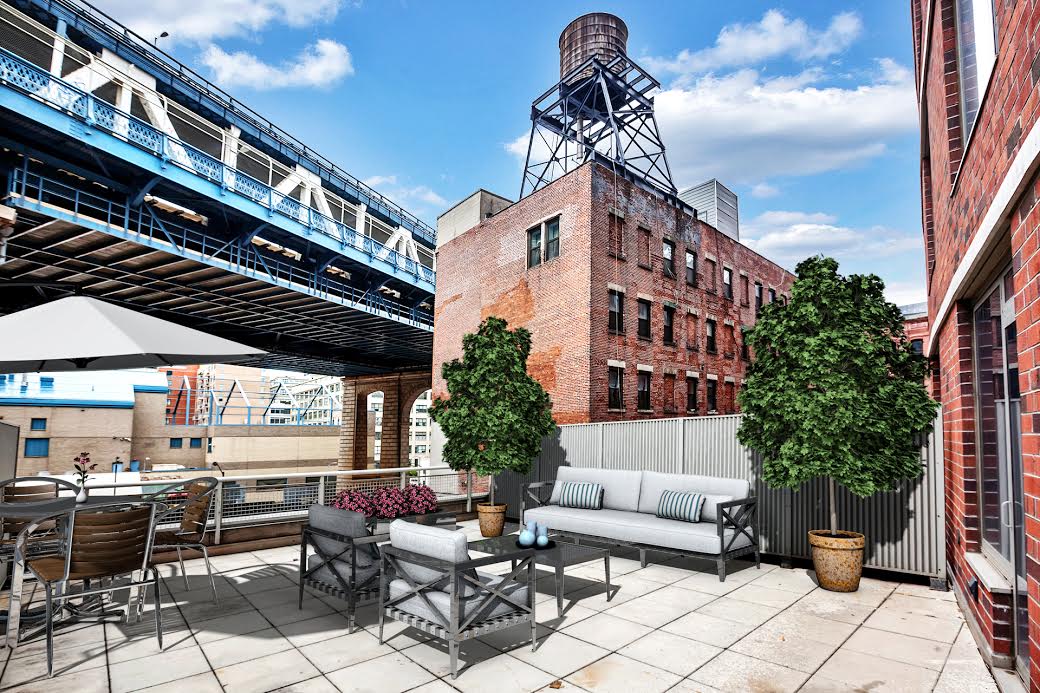
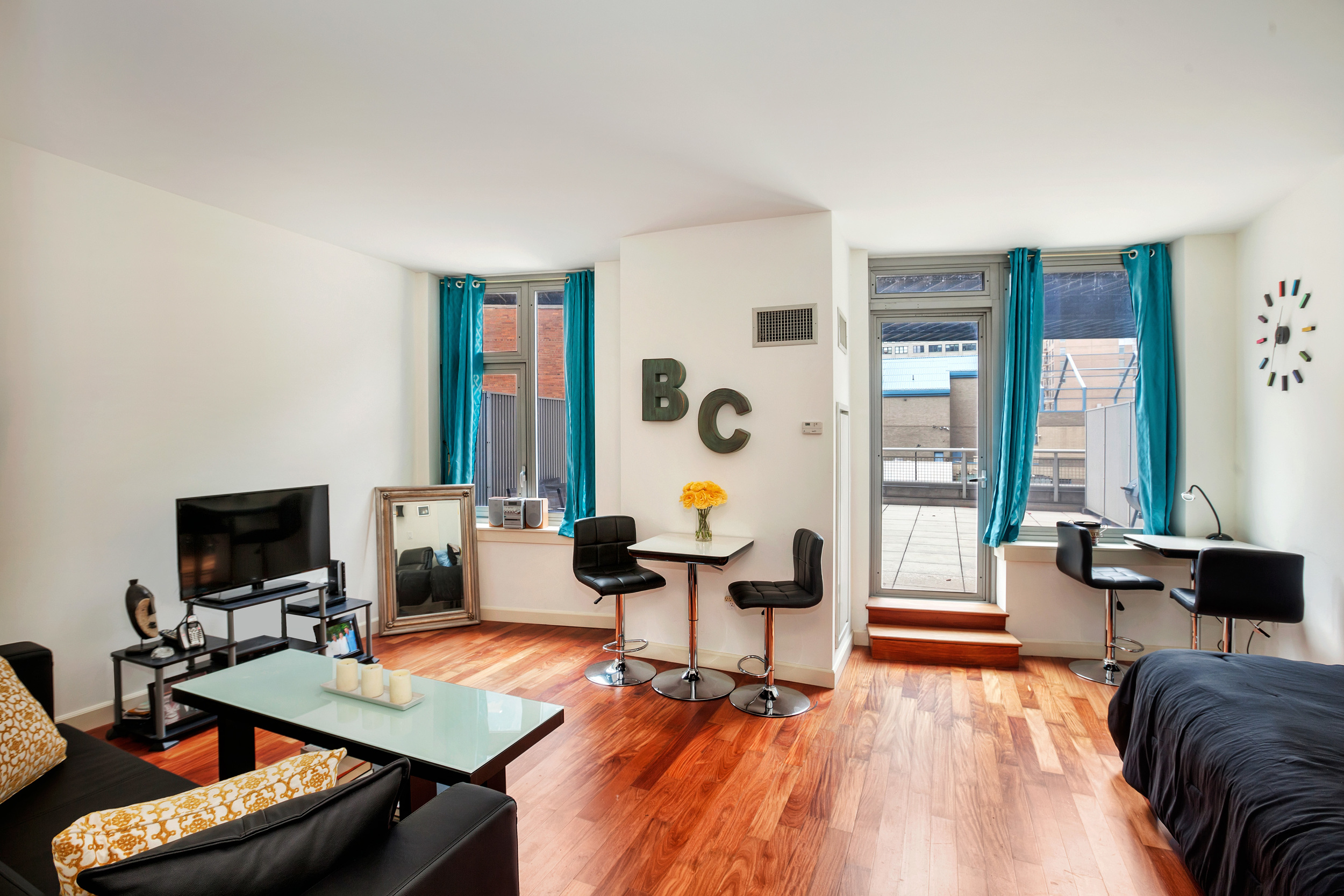



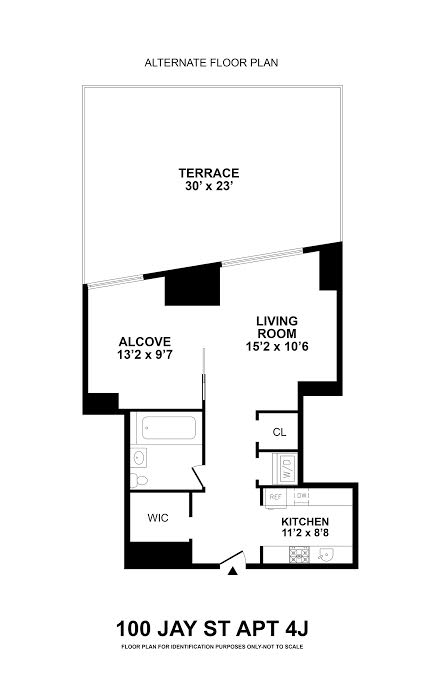
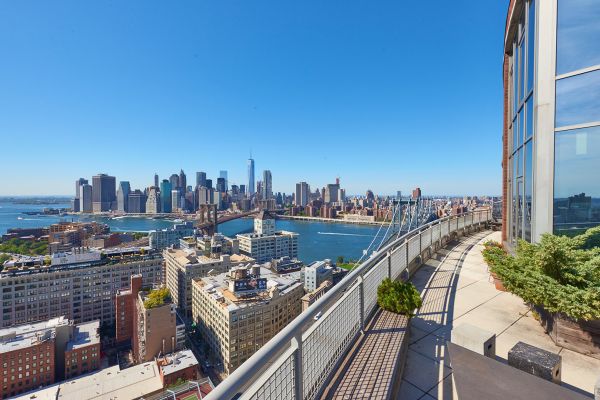
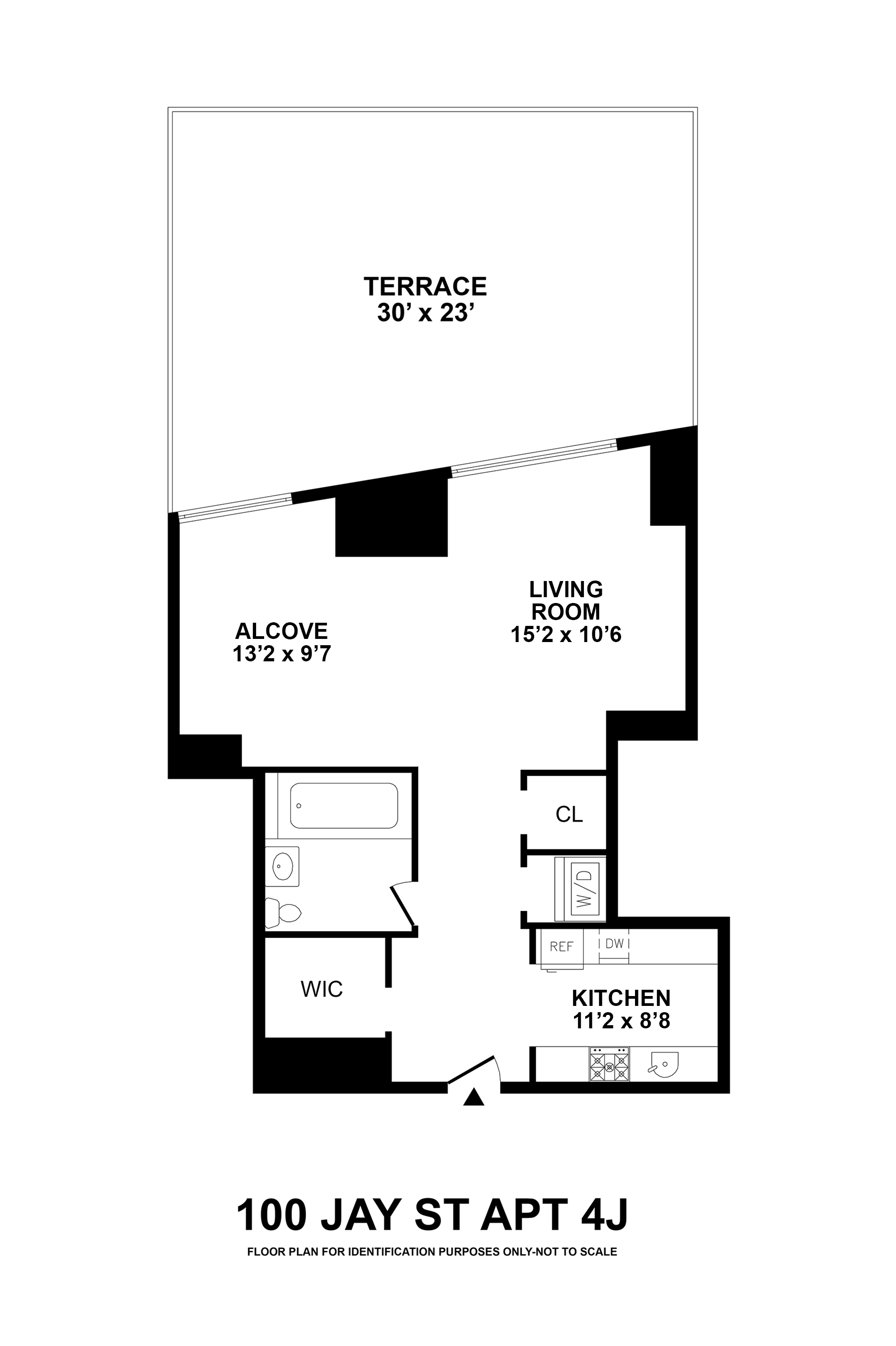
1 BED
1 BATH
$679,000
Location, separate kitchen, in-unit washer dryer, ample storage and lavish outdoor space — this fantastic studio checks literally every box on the dream home wish list. The 582-square-foot alcove layout, incredibly well suited for one-bedroom conversion, is lit by huge windows and a glass door leading to your immense 500-square-foot terrace. Here, quintessential Dumbo vistas surround you while the oversized footprint provides ample space for a full complement of patio furniture plus an urban garden to satisfy your green thumb.
Inside, dramatic interiors by Andres Escobar set a luxurious tone throughout. The kitchen is outfitted with deep-stained oak cabinets, gleaming countertops and full-sized stainless steel appliances, while the lavish bathroom features marble tilework, full bathtub and gray slate floors. With an in-unit washer-dryer and a walk-in closet, this home maximizes convenience, while high ceilings and gleaming hardwood floors amplify the home’s natural light. Enjoy tax abatement on this unit until 2023.
Residents of the J Condominium building enjoy a full menu of amenities, including full-time doorman, on-site garage, J Gym with yoga and Pilates room, children's play areas, media/screening room and a roof deck surrounded by breathtaking views of the Manhattan Skyline, East River and magnificent area bridges. Set in the heart of Dumbo’s cultural and culinary delights, 100 Jay Street is just moments away from fantastic restaurants, gourmet markets and eclectic nightlife. Open space abounds with half a dozen parks and the Brooklyn waterfront surrounding the block. Getting around is as easy as catching the F train at the next block or heading to the A/C or 2/3 trains further on. Or you can take the scenic route via the East River Ferry, docking at Brooklyn Bridge Park.
Monthly Update - May 2016
The Tides of NYC Real Estate Flow — Back and Forth
For all the doom and gloom that has been reported by this agent and most, if not all, firms, news agencies and other brokers, the national real estate market posted a 5.1 percent gain in March, according to the National Association of Realtors, back from February’s 7.1 percent drop. Preliminary reports are also telling us that gains are expected to continue through spring.
Locally, the buzz around the water cooler at real estate brokerage houses and real estate attorneys' offices is that momentum is swinging towards the seller, just a bit, and the $3 million-plus segment of the market is seeing a gradual resurgence.
But why? Did sellers finally drop their price enough to intrigue the buyers? Is the weather finally nice enough to trigger the spring sale market? Was the stock market’s bounce back to over 18,000 bringing more buying power to the table?
Yes, yes and yes.
Sellers got smart, and some got desperate coming out of the long slow winter, and reduced their prices. The spring weather always has a positive effect on the Manhattan real estate sales market, and lately, it has been gorgeous out during Sunday open houses. And who doesn’t like a robust stock market to fuel a strong real estate surge in Manhattan?
But all tides flow back to sea, and when our water recedes again, what will we find? For starters, the super-luxury market is still very sluggish, if not completely stopped, and if you haven’t looked up at the Manhattan skyline recently, there are more cranes than ever before. So, this huge tidal wave of unsold, new development property is about hit our shores. Oh yeah, and then there's the presidential election this fall, China’s big economic slow-down and the Fed's ever-looming rate hike.
For now, let us enjoy these waters, where sellers are enjoying a brisk spring and buyers are feeling confident. As for tomorrow, well, tides have a habit of changing. Back and forth.
COMPASS News:
- Compass is now in Aspen.
- Just in time for summer, we’ve rolled out our Neighborhood Guides for eight East End enclaves!
- The Compass Quarterly is here
Hoffman Team Active Sales Listings
(Plus $44 Million In Listings Coming Later This May)








Market Data in Real Time
As the only brokerage firm with a real-time Markets app, Compass is changing the way we thing about quarterly reporting. Today I am excited to introduce a new quarterly deliverable called "Manhattan Neighborhood Insights." With information taken directly from the Compass Markets App, we have highlighted overall trends and the performance of specific neighborhoods.
Download the Compass Markets app directly from the app store for more real-time market data. CLICK HERE
Chetrit May Be First Of Many Developers To Pull The Condo Plug....
The prospective residential conversion of the Sony Building at 550 Madison Avenue was once a symbol of the luxury property boom. With a $150 million penthouse planned for the top floors, it was slated to shatter Manhattan price records.
But the revelation Monday that the project had been nixed by developer the Chetrit Group – and the building sold for more than $1.3 billion – is just one of many signs that the boom that inspired it is quickly becoming a thing of the past, industry insiders told The Real Deal.
Some say that Chetrit is likely to be just one in a string of developers to ultimately pull the plug on condo projects before they even begin, in a bid to avoid falling victim to a slowdown at the top end of the residential market. In some cases, they may be forced to do so due to the lack of available condominium financing, which has dried up significantly in the past few months as some of the country’s largest banks reduce their exposure to the luxury market.
“I’m sure everybody who isn’t already moving forward on a condo is thinking again about whether this is the right time,” said finance broker Andy Singer of Singer & Bassuk. “That’s going to cut out a lot of the product that isn’t already under construction.”
And the city’s most ambitious projects are likely the most vulnerable.
“The bigger they are, the most scrutiny they’ll get,” said Leonard Steinberg, president of brokerage Compass. “Where there’s the potential for massive losses, there will be a second look taken.”
Many prominent developers are still said to be in the market for condo construction financing, including Michael Shvo’s 125 Greenwich Street, Extell Development’sCentral Park tower on West 57th Street and HFZ Capital Group’s large Chelsea project on West 18th Street. While some may manage to get financing from the banks, many may have to seek alternate sources of financing, whether it be foreign capital, crowd-funding or EB-5 financing.
“They can do everything right but if they don’t have a construction loan, it doesn’t matter,” said Robin Schneiderman of Halstead Property Development Marketing. “If that market turns off, some of these deals are just going to sit.”
But calling time on projects comes with its own set of problems for developers, who often have huge carrying costs associated with mothballing projects, and for brokers, who count on these projects selling in order to get paid.
In some ways, Chetrit and his partners, which included David Bistricer’s Clipper Equity, had the perfect fallback plan if the condo market went south. By purchasing a major office trophy such as the Sony building, the company ensured that it would still have an extremely valuable — and profitable — asset in the event that the condo market no longer appeared such a safe bet.
And Chetrit is not the only developer to have made use of a fallback strategy in recent months.
Developer Steve Witkoff announced earlier this year that he was hitting the brakes on plans to convert the Park Lane Hotel on Central Park South into luxury condos. Instead, he and his partners, who include Harry Macklowe and Douglas Elliman head Howard Lorber, have considered a renovation of the existing hotel. Since the asset is income-producing, the partners haven’t been forced to move ahead with the condo plan.
“The fact of the matter is, the velocity is not what it was,” Witkoff said in an interview with Bloomberg News in January. “Because we have a cash flow, we have the flexibility to wait.”
But not all developers can count on alternative uses for their assets. In the case of ground-up construction, developers can be left holding the bag – having to deal with loan payments and interest indefinitely – if the banks won’t fund a project.
“When the risk profile changes, they go to plan B,” said appraiser Jonathan Miller. “Chetrit was fortunate to have a Plan B, but I’m not sure everyone has one.”
Those who find themselves without a viable plan B must have the capital resources to hang in there, or risk losing their properties altogether.
Developer Ian Bruce Eichner learned that lesson the hard way – and for the second time – when the Durst Organization filed to foreclose on his prospective residential site at 1800 Park Avenue in February after he wasn’t able to secure construction financing.
In order to survive a dry lending cycle, developers have to keep their debt levels low, have patient capital partners and a cooperative interest rate environment. They should also look for ways to monetize the asset in the meantime, whether it means asking an existing tenant to remain on for another year or finding an alternate use, Singer said.
“Just because you buy real estate, doesn’t mean you have a God-given right to make a profit,” added luxury broker Donna Olshan. “Timing is everything. If the timing goes against you, you’ve got to have the power or the resources to hang in there.”
New development: a broker’s gamble
For the agents who market these projects, there are no guarantees – and a shift in a developer’s strategy can mean a big hit to their balance sheets. Elliman this week lost a potentially massive payday on a $1.8 billion sellout when Chetrit flipped the script.
In most scenarios, brokers don’t see a penny of their commissions until a unit closes. If a deal is killed, the work they put in during the pre-development phase goes for naught. The prospect makes the new development market a much scarier proposition than it was even a few months ago.
“It’s a sad day when a building gets canceled,” Steinberg said, “but the natural forces of the market are at play here. I’m sure they did a lot of work on that building and it must be devastating for them.”
Some industry veterans said many development marketers are well-prepared for these kinds of surprises and have accounted for them in their financial projections.
“I think the development marketing companies are pretty good at reading tea leaves with their clients and don’t count this as earned money,” Miller said. “They know they’re taking on risk and incurring costs that aren’t necessarily going to be reimbursed, with the assumption that the project is going to move forward. They have to understand that to play in this sandbox.”
Ultimately, a slowdown in the number of condo projects being financed may be good news for the market, Singer said.
“This is the type of change that begins to alter the cycle,” he said. “If new production slows down or stops as it seems to be doing, it gives the market a chance to absorb the existing product. Anyone who thinks they can wait three years and get a 50 percent discount on an apartment is going to be wrong.”










